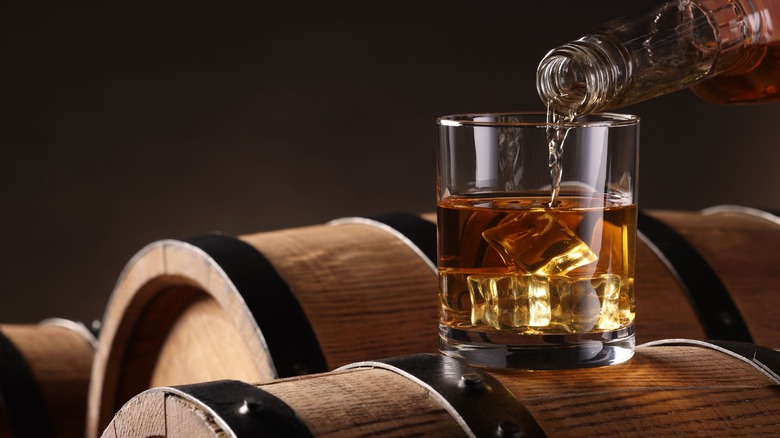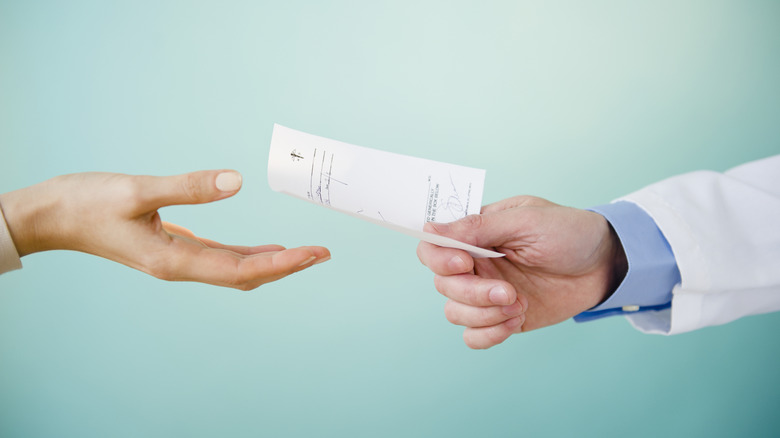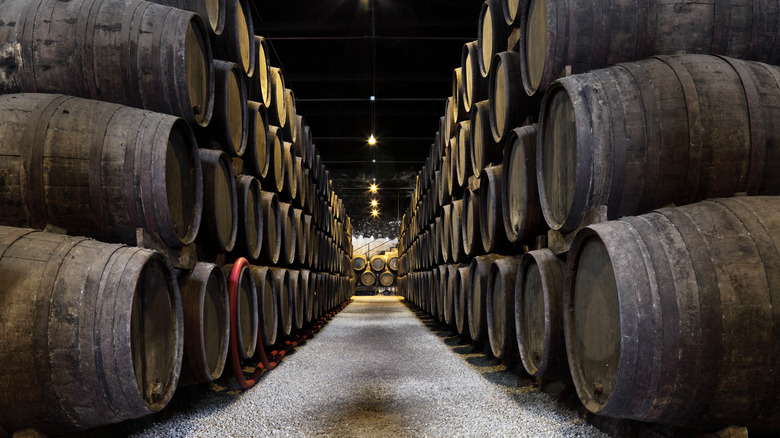How People Got Liquor Prescriptions During Prohibition
Prohibition was a law enacted in 1920 by the 18th Amendment, which banned the manufacture and sale of intoxicating liquors in the United States. In modern times, we still remember the dark history of the illegal activities that grew out of the seeds it planted.
The law failed to actually stop the possession, consumption, and transportation of liquor — getting around the law became a game of strategy in the eyes of many civilians. The criminal activity included speakeasies and bootlegging. It seemed as though there were no limits as to who was willing to spend or make money from the illegal acquisition of alcohol.
One of the few ways for a person to get their hands on a bottle of legal liquor was through a medical prescription. Being prescribed alcohol for medical ailments may seem far-fetched now, but it's not one of the many myths about alcohol. With the sale of intoxicating substances being outlawed, there was both a will and a way for a person to get a drink — if your doctor was interested in earning a little extra money.
Obtaining a prescription for liquor
Prescriptions for liquor were available during Prohibition thanks to the U.S. Treasury Department, which had authorized the use of medicinal alcohol. The Internal Revenue Service (IRS) provided watermarked prescription papers for medical professionals to write prescriptions specifically for the drink.
The usual prescription called for either brandy or bourbon (or whiskey in general) and would be given to those managing a variety of ailments from cancer to depression. When the supply of medicinal liquor was running low, the government would briefly allow manufacturers to replenish stock. The prescriptions of one pint of liquor could be filled every 10 days for each patient as long as they were willing to pay a fee to have the prescription written and another fee to have it filled.
With the immense influx of crime during Prohibition, it's little wonder that some doctors also sought to see a little extra profit; these prescriptions could often be a way for medical professionals to make some money by helping a person get a drink or two. The only other exceptions to Prohibition were made for priests, ministers, and rabbis to distribute holy wine during religious ceremonies. Farmers were also permitted to drink any wine they made for themselves.
Can liquor actually be used as medicine?
Medicinal liquor prescriptions seem undeniably suspicious when partnered with Prohibition. However, the use of liquor in medical practice wasn't confined to the 13 years when liquor sales were illegal.
Liquor has long been thought to have medicinal properties. It wasn't until the mid-1800s that the actual benefits of liquor consumption came into question. After breakthroughs in scientific medicine, pints of alcohol like whiskey and brandy were no longer considered forms of medicine. In 1917, the American Medical Association voted in support of Prohibition.
These days, old advertisements advising the use of liquor to aid in sickness, pain, and sleep provide a chuckle for most as medicine has advanced well beyond that. During Prohibition though, it's entirely possible that not everyone was utilizing medicinal alcohol prescriptions just to get a fix of their favorite drink — they may have genuinely believed the cure to whatever they were dealing with was hiding in a bottle of brandy.


